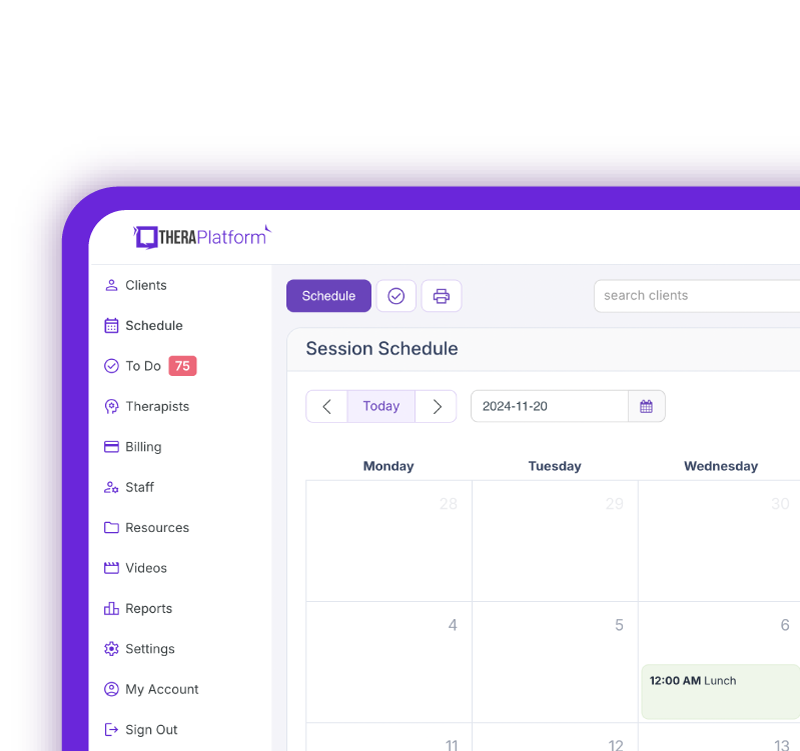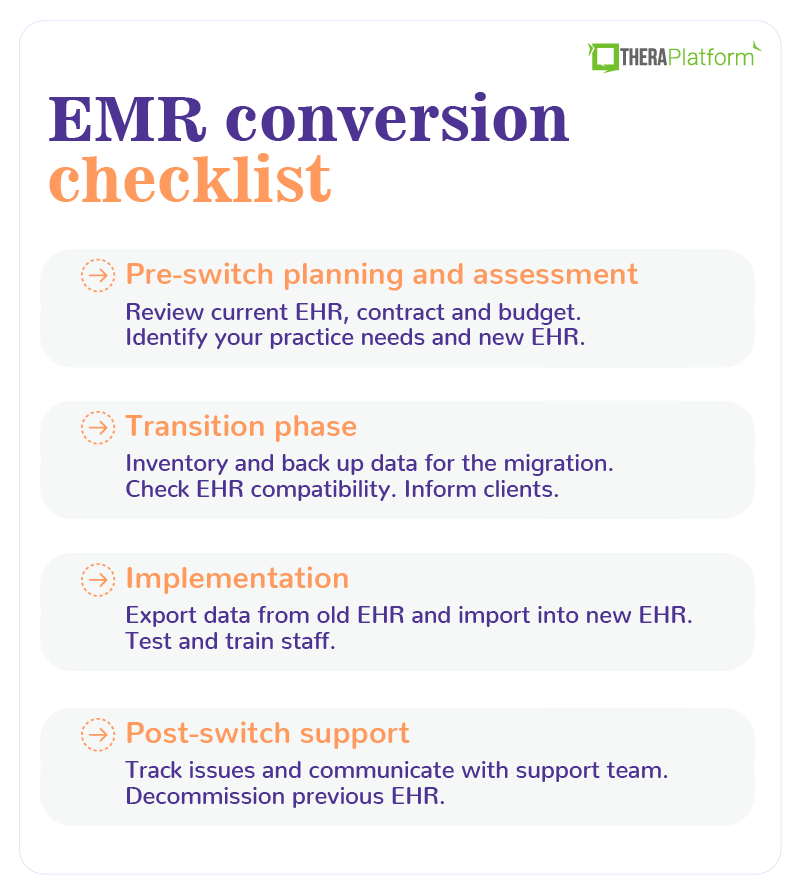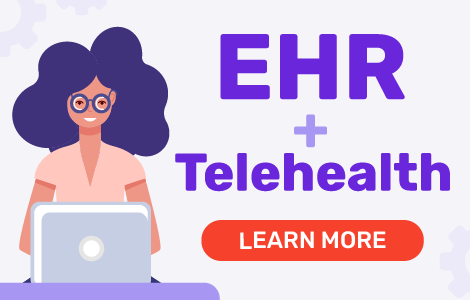EMR conversion

EMR conversion can feel like a scary undertaking for a therapist given that Electronic Health Records (EHR) are the foundation for many providers' businesses. Therapists use EHRs to schedule appointments, bill and document sessions daily so it’s important that the EHR is a great fit for the clinician’s practice. And while an EHR may have served a therapist well in the past, the tool may not be the best fit for the long term.
→ Download My Free EHR Conversion Checklist
Summary
- Many therapists hesitate to switch EHRs due to concerns about cost, time, and learning a new system. However, a well-structured plan can help ease the transition.
- Before making the switch, assess your current EHR, review contract terms, determine your practice's needs, and establish a budget. Understanding these factors ensures you select an EHR that aligns with your practice's goals.
- Moving client records, billing information, and other data must be done securely and efficiently. Backing up data, ensuring compatibility with the new system, and maintaining HIPAA compliance are critical steps.
- After implementation, continuous staff training, system testing, and client communication help optimize workflow and enhance user satisfaction, making transition to a new EHR like TheraPlatform smoother.
Streamline your practice with One EHR
- Scheduling
- Flexible notes
- Template library
- Billing & payments
- Insurance claims
- Client portal
- Telehealth
- E-fax

For example, maybe the cost of the EHR or EMR has ballooned since they first signed up. Perhaps their current solution's functionality has become too cumbersome or lacks modern features like integrated telehealth or customizable templates. Maybe the company's once-stellar customer support has suddenly slipped.
Whatever the reason, living with these challenges isn't ideal, especially if it takes time and focus away from your clients or growing your practice. But the alternative – an Electronic Medical Record conversion or EMR conversion– feels like a stressful undertaking.
Therapists worry about how long an EMR or EHR conversion may take or find the data migration process intimidating. And once they've committed to a new EHR, they need to learn a new system. These are all valid concerns!
While it doesn't happen overnight, a little planning can lessen the stress around an EMR conversion. In this blog, we'll break down the steps for a successful EMR conversion which includes creating pre-switch, transition and post-switch plans, and a case study. Ready to get started?
Practice Management + EHR + Telehealth
Manage more in less time in your practice with TheraPlatform

EMR conversion
Steps for an EMR conversion
- Pre-switch plan and assessment
- Implementation
- Post-switch plan and assessment
Pre-switch plan and current EHR assessment
A pre-switch plan and assessment for an Electronic Medical Record conversion is a great way to take inventory of your current EHR and determine what you want in a future EHR with an eye toward costs and the data you need to migrate.
Your pre-switch plan consists of four parts: Assessing your current system and needs, researching and selecting a new EHR, and planning your data migration and communicating with clients.
Using an EHR conversion checklist can help keep you organized (and sane) as you make the transition. Our checklist will help you assess your current EHR as well as potential EHRS and lay the groundwork for the concrete steps needed to move your data.
→ Download My Free EHR Conversion Checklist
Evaluate your current EHR
Assessing your current system involves a handful of steps.
- Evaluate current EHR: Identify what you like about your current EHR along with its advantages and limitations. Maybe you like the price, but it’s down more often than not. Perhaps you use several tools in conjunction with an EHR but want an integrated solution. Consider writing a pros and cons list.
- Review your contract: Examine the termination requirements on your current EHR and understand any potential fees or special terms.
- Determine your practice needs: Decide which features and functionalities best support your business. For example, would you like to expand to telehealth? Determining your needs and how different features can alleviate pain points will help you find the best EHR for your practice. If you need help on the features front, download our free checklist.
- Budget assessment: After you've made a list of features, consider the cost, which is a top driving factor in choosing an EHR.
In addition to what you'll pay upfront or monthly, consider add-on costs for other features. Find out if there’s a fee to cancel the software. Can you add therapists for free, or is that an additional cost? Go in knowing the total costs and avoid being caught by surprise.

→ Download My Free EHR Conversion Checklist
Selecting a new EHR
Once you've assessed your current software program and your preferred budget for a new EHR, it's time to research a new EHR.
Here's a list of steps for researching and selecting an EHR for your Electronic Medical Record conversion.
Identify EHR options
Research different EHR systems that fit your practice needs. Do you spend too much time scheduling? Find an EHR where clients can self-serve through a scheduling widget based on your availability. Would you like real-time validation on insurance claims submissions? And if you need help with a little bit of everything, consider an all-in-one solution that takes the toggle out of administrative tasks.
When you've narrowed your list to a handful of EHRs, it's time to learn more about each.
Here are a few suggestions to help you kick the tires on a potential future EHR.
- Request demos: Schedule free trials or demos.
- Free trials: Start a free trial with your chosen EHRs.
- Gather feedback: Ask colleagues what systems they use and why.
- Check software review sites: Several can inform your decision.
- Learn all you can: During the free trial, use the platform as much as possible and continue working with a support team to ensure your selected EHR fits your needs. Contact support for QA sessions or schedule a video call.
- Compliance check: Ensure that the new EHR meets all regulatory requirements regarding security and privacy (e.g., HIPAA, BAA).
Common therapy EMRs
Some common Electronic Medical Records (EMRs) used by therapists include TheraPlatform, ClinicSource, ICANotes, and SimplePractice. These platforms offer various features tailored to the needs of therapists, such as secure documentation, scheduling, billing, and client management although not all of them offer modern features and sleek interface, therefore scheduling demos and signing up for free trials, can help you make the most educated decision for your private therapy practice.
Among the common EMRs for therapists, TheraPlatform stands out due to its cutting-edge backend technology for insurance billing with batching and automation capabilities; robust Telehealth options with a built-in whiteboard, teaching tools and apps; extensive customizations and automated outcome measures.
Additionally, TheraPlatform offers a hassle-free 30-day free trial and competitive pricing, making it an attractive option for therapists looking for a comprehensive, user-friendly platform to manage their practices effectively.
Customer Spotlight: Danny Zander
"TheraPlatform for my business has been a game changer. It has made me more efficient. It has made my practice be as successful as it is"
read more...EHR data migration planning
Once you've decided on your new EHR, consider how data in your current system will be transferred to the new system during your EMR conversion.
Here are a few guidelines to help make the EHR data migration go smoothly:
- EHR data migration inventory: Take an inventory of the data you want to move. Consider client records, appointment histories, notes, and billing information, along with other data points.
- EHR data migration compatibility: Confirm that your new EHR accepts data from your existing EHR.
- EHR data migration backup: Back up the data from your current EHR. You’ll be happy you did.
Also, when thinking about your data, keep compliance, security, and privacy top of mind. During the EHR data migration, ensure that both old and new EHRs have robust security measures and verify that client data privacy will be maintained throughout the EHR data migration process.
After you've followed these steps and feel confident about the move, choose a go-live EHR data migration date that will have minimal impact on your practice operations.
Client communication for an EMR conversion
Once you have a date solidified, tell clients that a change is pending and share how it will benefit them. Let them know the name of the new platform and inform them they may receive a welcome email from the new platform asking them to set up a password for a client portal.
If a client has never used a client portal, explain what it is and its benefits, along with any additional things they will be asked to do (e.g., complete forms or enter, enter credit card information.) It’s a good idea to outline what’s expected of them after your Electronic Medical Record conversion.
Free Resources for Therapists
Click below and help yourself to peer-created resources:

Implementation of an EMR conversion
The countdown is on! At this point, you’ve chosen a new EHR, checked contracts, aligned with budget, checked compatibility and have outlined the data that needs to be moved. Just a few more details before you make your EMR conversion official.
Go-live prep for an EMR conversion
- Take note of your new EHR's support hours.
- Know how to locate and access training resources and materials.
- Have a process for tracking and monitoring bugs and issues.
- Understand (or develop) a process for resolving issues, including a clear communication channel for the vendor.
Go-live date for an EMR conversion
The big day is here and you’re probably feeling a mix of nervousness and excitement. Here is what to expect.
Setup and configuration for an EMR conversion
You’ll work with your new EHR vendor to set up and configure the system to fit your practice's workflow.
Testing and training for a EMR conversion
Hooray! You're past the setup!
Logging in and testing are MUSTS. Make sure the new system works as expected and all data has migrated over correctly and completely during the Electronic Medical Record conversion.
If you're an administrator at a group practice, consider how you'll schedule and implement staff training and communicate the change to clients. Continually seek feedback and monitor performance.
Post-switch plan for an EMR conversion
When the transition is complete, and you've had time to track and monitor the functionality of your new EHR, it's time to decommission the old EHR and securely deactivate the system to prevent unauthorized access. Double or triple check this step. It’s important to the security of your business.
Using an EHR is a work in progress. Although your team is trained on the system and clients use it more regularly, review outcomes and evaluate the EMR conversion success based on user satisfaction, operational efficiency, and client care quality.
EMR conversion doesn't have to be daunting. With a little planning and patience, you'll be managing your practice on a new EHR in no time.
Streamline your practice with One EHR
- Scheduling
- Flexible notes
- Template library
- Billing & payments
- Insurance claims
- Client portal
- Telehealth
- E-fax

TheraPlatform is an all-in-one EHR, practice management, and teletherapy software built for therapists to help them save time on admin tasks. It offers a 30-day risk-free trial with no credit card required and supports mental and behavioral health, SLPs, OTs, and PTs in group and solo practices.
More resources
- Therapy resources and worksheets
- Therapy private practice courses
- Ultimate teletherapy ebook
- The Ultimate Insurance Billing Guide for Therapists
- The Ultimate Guide to Starting a Private Therapy Practice
- Practice management tools
- Behavioral Health tools




